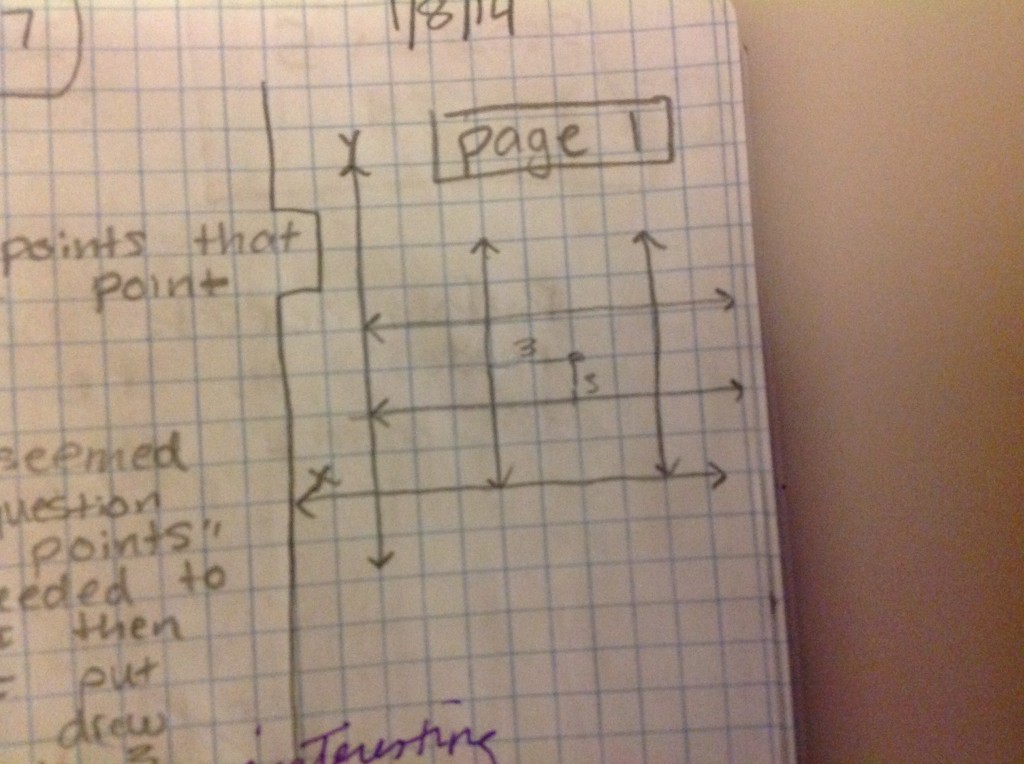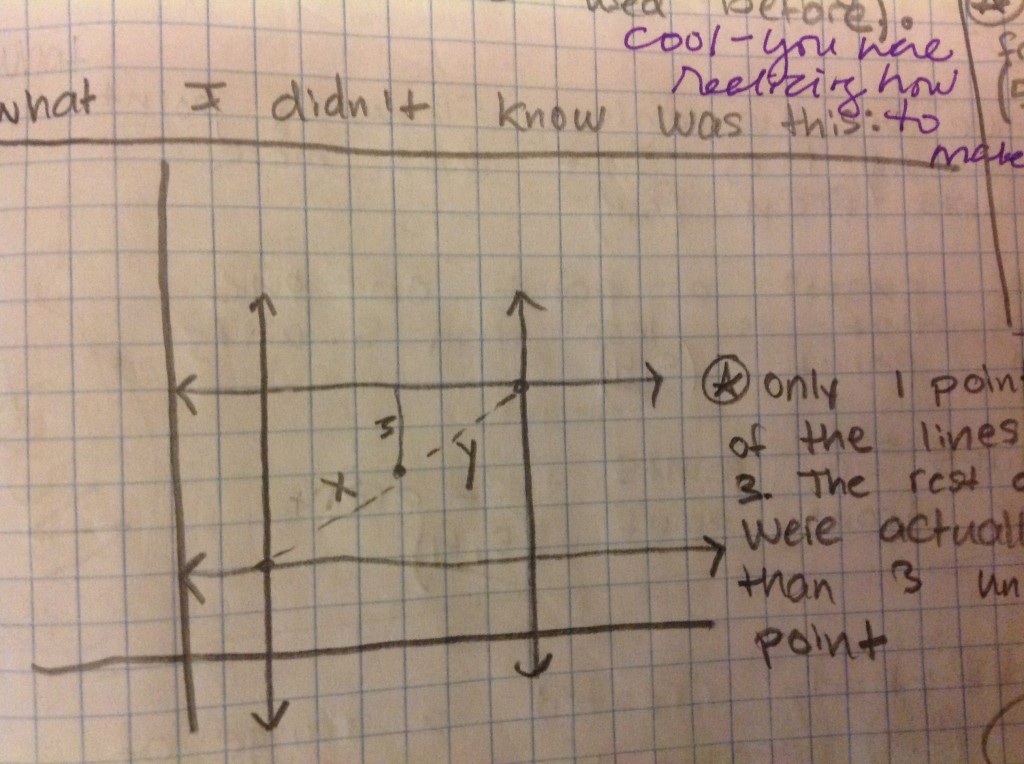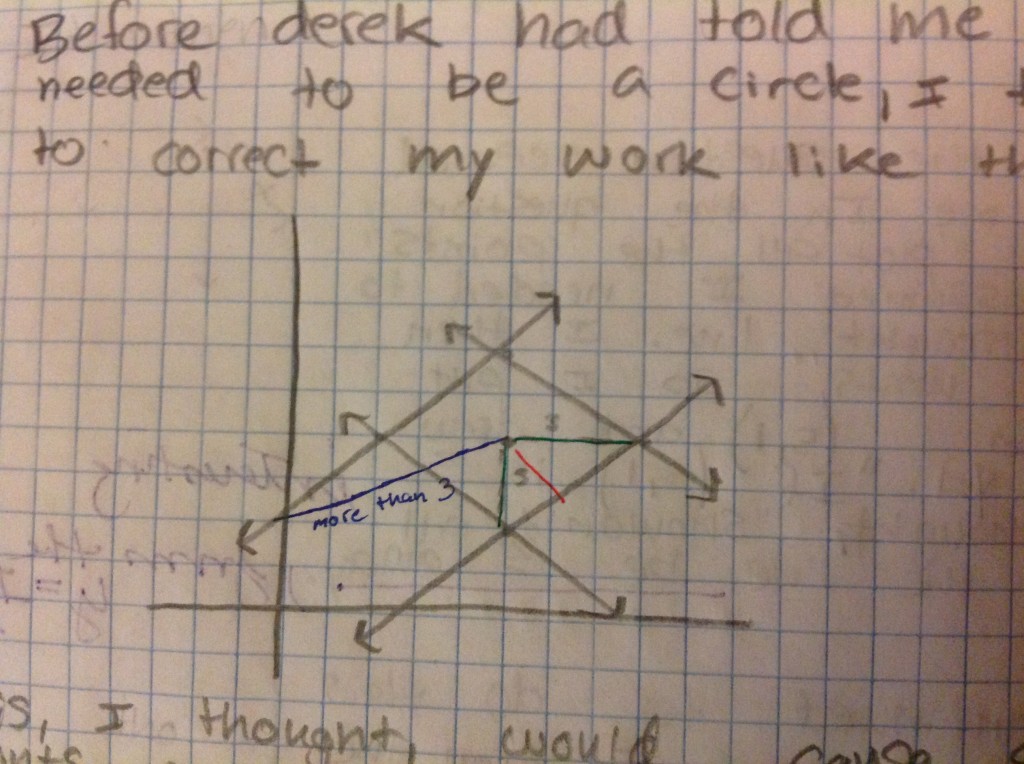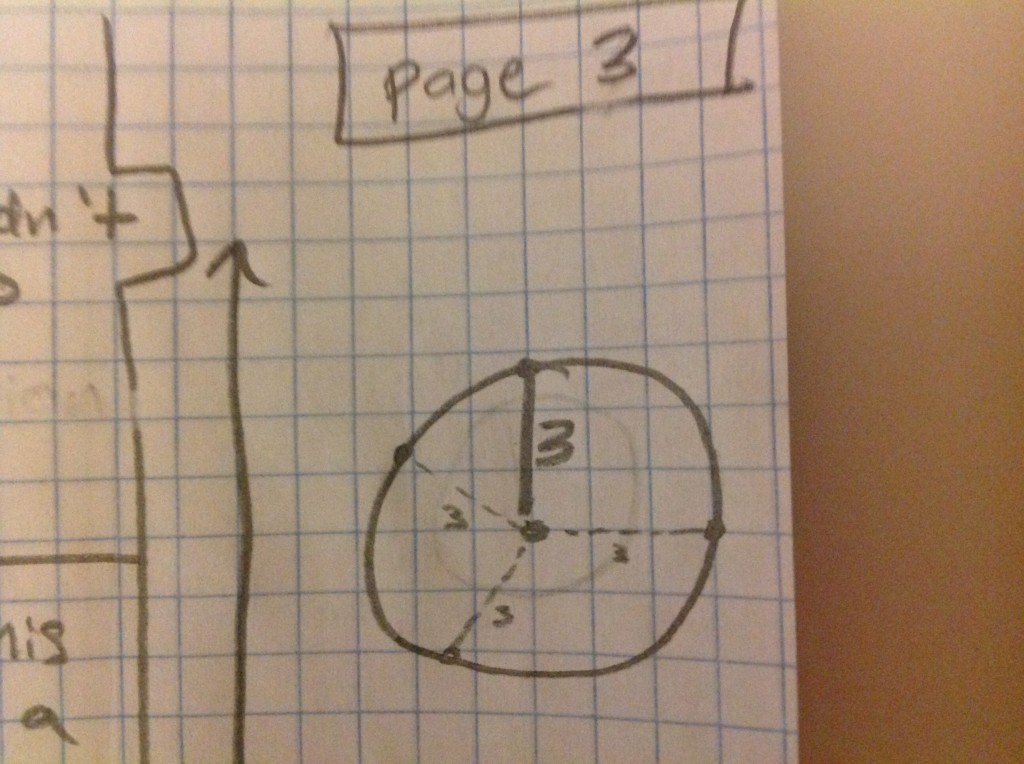I have been using journaling in math class since 1996 – which was a really important year in my teaching career for lots of reasons, but it was definitely because I was introduced to the idea of math journals. Since then I’ve done many different iterations for what my expectations are. Even this year I did something new where I allowed students to write about errors they made on assessments in order to attempt to compare their assessment problems to what they did on homework in the hope of reflecting on the work pre-assessment for future problem sets.
However, a lot of students still use their journal almost like a problem-solving conversation with me, especially after we have already gone over a problem and they still don’t understand a method. Here is one I ran across just the other day in my lower-level geometry class and thought it just perfectly expressed some of the goals I am hoping to accomplish with journaling.
I’ll call this student Cindy and we had just introduced the theorems about parallel lines through a geogebra lab and this had been the first problem they looked at that took the concepts out of the context of the lines and threw it into a triangle. For many students this might be an easy transfer of skills (including the algebra, other theorems, etc.) but for the kids I have – not necessarily. Here is what Cindy wrote: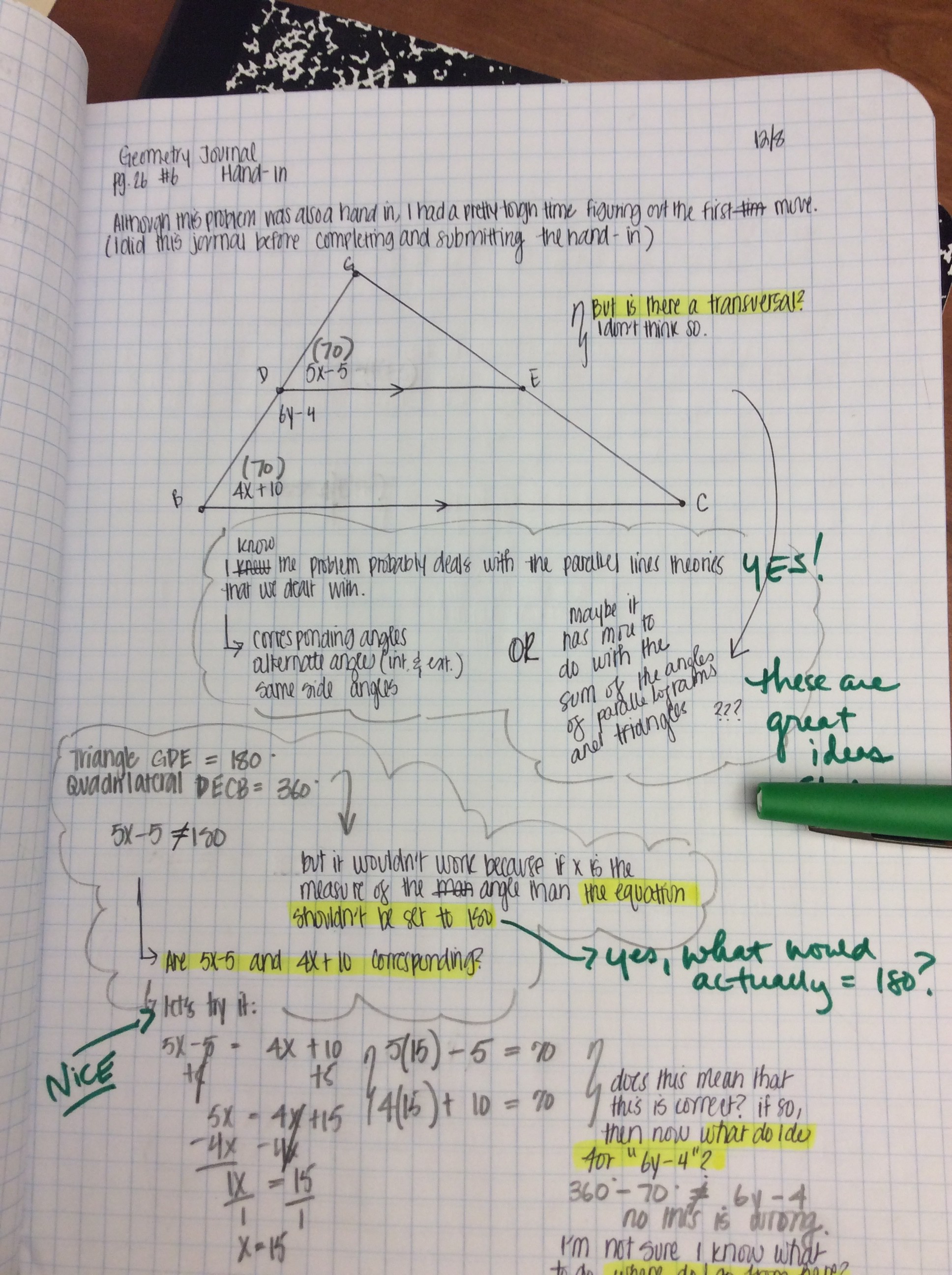
The first thing that Cindy does in her journaling is make her own thinking explicit (which I love). She is stepping me through her thinking and the questions that arose for her. This is actually a major step for many students who are confused – are they able to even know what they are confused about?
She writes: “I know the problem probably deals with the parallel line theories that we dealt with.” and then lists the types of angles we studied and then with a big “OR” says “maybe it has something to do with the sum of the angles of parallelograms and triangles?” Little does she know that what she is doing is practicing synthesizing different pieces of prior knowledge – is it overwhelming to her? – possibly, but she went there and that’s so great! I wanted her to know that I was excited that that she even thought about the sum of the angles so I gave her some feedback about those ideas.
She wrote down what she knew about the sums of the angles which we had also studied.
She writes her first equation to think about: “5x-5/=180” using one of the angles in the top triangle. I would’ve loved to know where that was coming from. What made her write that? She then notes that “but it wouldn’t work because if x is the measure of the angle than the equation should be set to 180”
There is so much that this tells me about her confusion. She is not understanding what the expression 5x-5 is supposed to be representing in the diagram I think, or she isn’t connecting what x is “not representing” (the angle) and the whole expression is representing too. She also is confused about between the sum of the whole triangle’s angles and just that one angle.
She then looks at the two expressions she is given, 5x-5 and 4x+10 and I think makes a guess that they are corresponding angles – she doesn’t give any reason why they are corresponding. She just asks the question. But the cool thing is she says “Let’s try it.” I love that. Why not – I am always encouraging them to go with their ideas and the fact that she tries it is wonderful. The funny thing is she does end up getting the same value for the two angles so she asks: “Does this mean that this is correct?” and then “What do I do for “6y-4?” and still has not connected many of the ideas line the fact that these angles are a linear pair and that’s where the 180 comes into play, or even why the angles were corresponding in the first place. So many questions that she still has, although I am encouraged by her thinking and risk-taking.
This journal entry allowed me to have a great follow-up conversation with Cindy and she was able to talk to me about these misconceptions. I’m not sure I would’ve had this opportunity to clarify these with her if she had not written this journal entry and then she would not have done so well on the problem set the following week. I just love it! Let me know if you use journals and if you feel the same clarifying or communicative way about them too.
See my website for lots of sample entries and also other blogposts and resources about journaling if you are interested.
